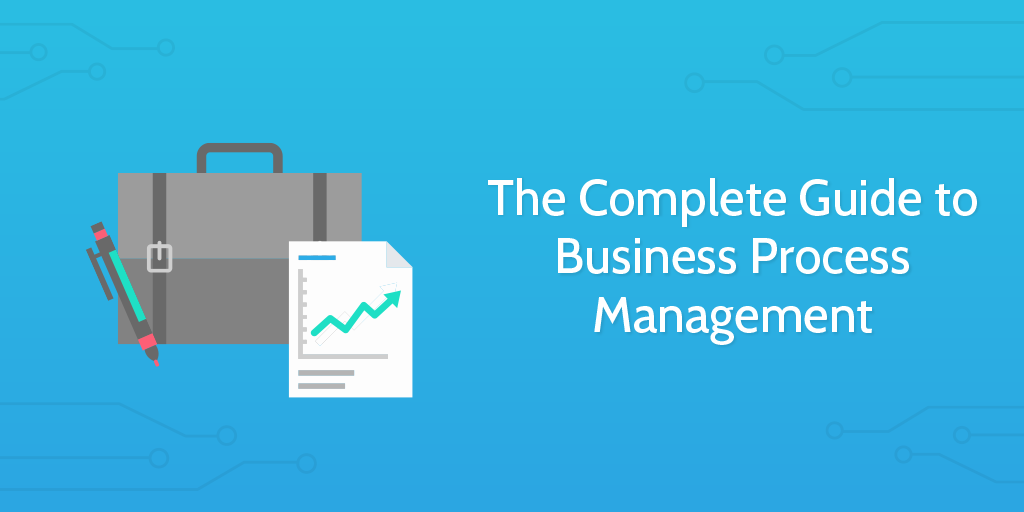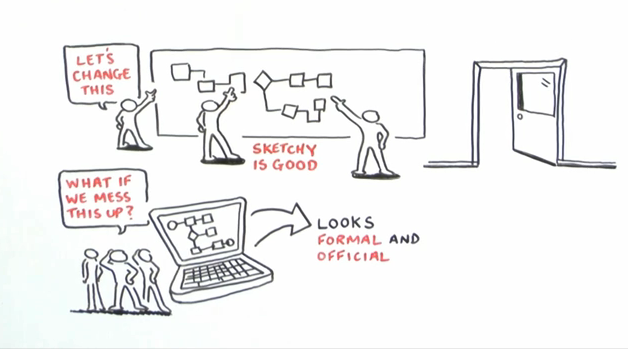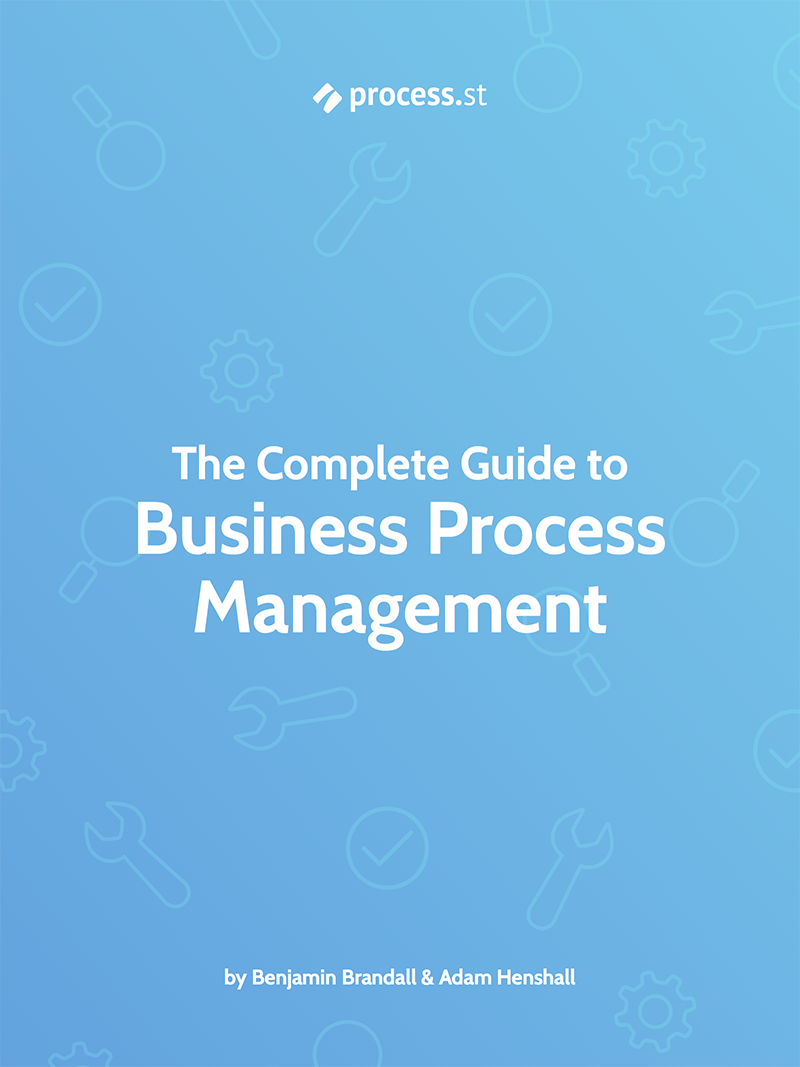
Processes aren’t just paper inside folders full of useless information no one looks at. They’re the blueprint for how your business works on a day-to-day level.
How do you create reports? How do you check in with your team? How do you conduct and record your meetings?
The answer any efficient business will give you is that you use a process.
We’re well aware that the most dominant literature on business process management is extremely boring and un-actionable — reading guides on BPM is the equivalent of opting to take a tranquilizer.
So why, when processes are so important, hasn’t anyone ever put together a clear guide for businesses of any size?
That’s what we thought, and that’s why we’re publishing this 112-page ebook.
Download the Complete Guide to Business Process Management
Without processes, your business is a ticking time bomb, prone to error and impossible to scale.
Companies that implement processes have a 280% higher success rate on their projects (95%) versus those that don’t (25%).
On a day-to-day level, you can use processes to:
- Record the one best way to do work, making it faster and cheaper to train new hires
- Stop making mistakes because of human error and oversight
- Reduce operating costs by rocketing efficiency
- Build scalable systems that help your business stop dealing with urgent work, and focus on growth
What’s in the book?
- What is a Process? A Non-Boring Guide for Regular People
- How Processes Protect Your Business from Crashing and Burning
- Why the Normalization of Deviance is Hurting Your Company
- What is Business Process Management? A Really Simple Introduction
- Business Process Analysis (Without the Jaw-Breaking Yawn)
- Why You Should Bother with Business Process Modeling
- How to Switch to BPM Software When You’re Just Using Paper
- Business Process Reengineering: What to Do if Your Business is Failing
- Is Business Process Outsourcing Relevant for Your Small Business?
Learn why processes are essential
Processes protect your business from failure. If you don’t measure what’s working and what isn’t, you can’t make any informed changes. You can stab in the dark, but you might never find out why what you’re doing does or doesn’t work.
Processes also act as the blueprint for your business to scale. Sharing detailed and comprehensive knowledge with new and existing employees is the only sure-fire way to keep your business running properly without wasting time on training, missing deadlines, or simply forgetting how to do things.
There are plenty of studies on why processes are effective, and some post-mortems from history’s greatest failures that show how errors can be easily avoided by systemizing tasks.
- Surgeon, writer and public health researcher Atul Gawande found that implementing a checklist in the operating theatre. 78% of staff actually observed the checklist to have prevented an error in the operating room, and 80% said the checklist was easy to use and improved the safety of care.
- Disasters such as Chernobyl and the Challenger shuttle could have been avoided if the people involved with these organizations had implemented and enforced processes. In short, all human error incidents are a result of not following the proper process.
- Zenefits is living proof that your business will go off the rails without the right processes in place. While they saw explosive growth, their operation was unsustainable and eventually came crashing down — an embarrassing, devastating failure.
Time and time again, it’s been proven that documented and enforced processes are vital if your business is going to do anything but fail.
But where do you start? Start with our business process management guide.

Learn how to create processes
There’s a right way to create a process, and there’s a ton of wrong ways.
George Boorman, the man responsible for Boeing’s watertight pilot process, sums it up nicely:
“Bad checklists are vague and imprecise. Good checklists are, above all, practical.”
That’s the high-level overview, but in the business process management guide, I give you the step-by-step process you’ll need to create processes for anything from scratch.
Processes don’t need to be complex, and, depending on their exact purpose, they don’t need to be 100% comprehensive. They can be fully automated, semi-automated, or fully manual — the important thing is, they exist and are accessible by the people who need them. That’s the only way to reduce human error and lower the rate that your team forgets to do their work or vital steps in their workflows.
In the guide, I teach you how to create the processes you know your business needs. It contains step-by-step instructions for every level, from basic to advanced.
Learn how to map and optimize your current processes
The only way you can be sure you’re running the most optimal process is if you fully understand how it works at every stage. When you hire a process consultant, they’ll come in and interview your team about how they get work done. Then, they’ll map the existing process and work with the team to optimize it. That means smashing bottlenecks by cutting out useless reviews and approvals, minimizing the amount of paper (or data) moving from place to place, and automating as much as possible.
Processes are the kinds of things that sound complex but are actually just a necessary step

This guide — written by analyzing best practices from process experts — will teach you how to do it without hiring an expensive consultant.
Now you can use techniques that are usually the reserve of big businesses that can afford the high price tag.
Learn how to outsource your processes
One of the major benefits of having a documented process is that you can outsource it without much friction. That helps your business scale because you’ve already worked out the most efficient way to do the task.
Another way to approach outsourcing is to hire a company to handle one entire side of your business. Some companies hire IT service providers or bookkeepers as an alternative to hiring a specialist in-house. To use an example from the world of corporations, IBM handles all things IT for Coca Cola. To use an example from Process Street, we hire an agency that recruits virtual assistants and handles their payroll. That means we don’t need to hire a recruiter or an accountant for a big chunk of our staff.
This ebook contains step-by-step guides to getting your processes ready to outsource in house, and ideas of what you could save money on by hiring agencies.
Learn what to do when your processes fail
Sometimes you have to rip everything up and start again. The corporate term for that is business process reengineering (BPR). Almost every business has had to make major changes to their operations at some point, whether it’s Ford, Google, Taco Bell, or countless smaller businesses that haven’t had case studies written on them.
One example might be moving from paper to a centralized company database. Enterprise Engineering Institute describe the improved process:
“In the new situation the buyer registers an order in an online database. The buyer no longer sends a copy of the purchasing order form to the creditor administration. When the goods arrive at the store, the storekeeper checks in the database whether the received goods correspond to the purchasing order form.”
Drawing from every case study on we could get our hands on, this ebook contains numerous examples of how real businesses have impacted their bottom line by changing their processes.
Get the ebook for free
Everything you need to start documenting, mapping, and optimizing your processes condensed into one handy book.
Download it now:







 Workflows
Workflows Forms
Forms Data Sets
Data Sets Pages
Pages Process AI
Process AI Automations
Automations Analytics
Analytics Apps
Apps Integrations
Integrations
 Property management
Property management
 Human resources
Human resources
 Customer management
Customer management
 Information technology
Information technology




Benjamin Brandall
Benjamin Brandall is a content marketer at Process Street.